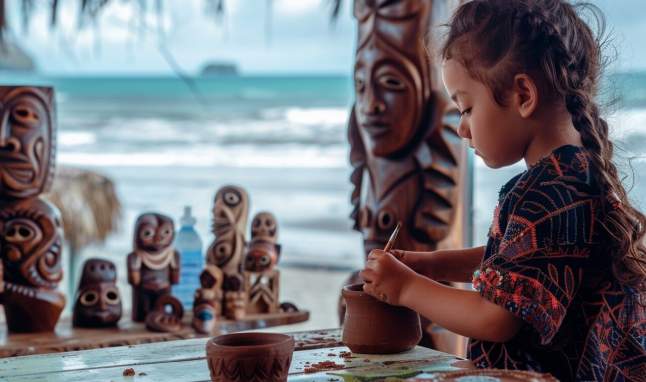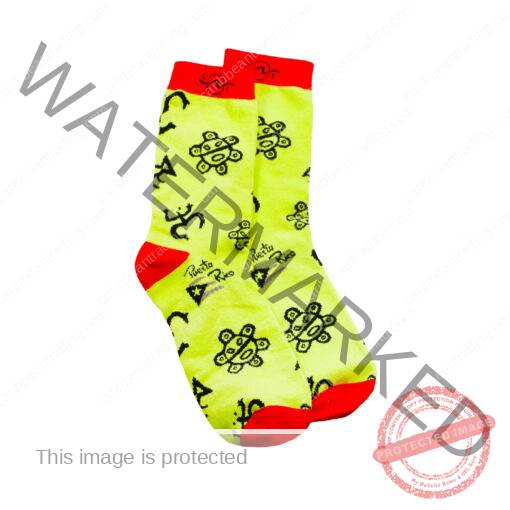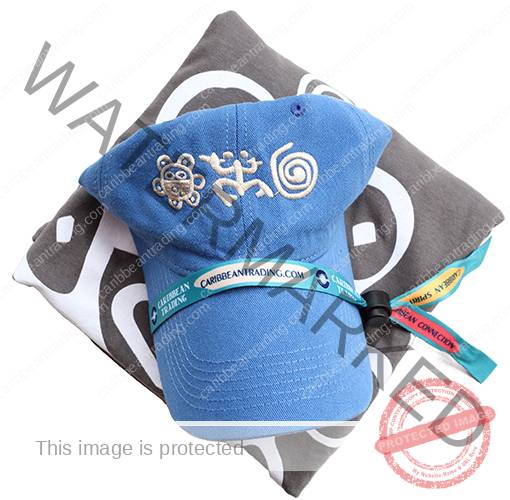Kids
Fun and Educational Caribbean Crafts for Kids
The Caribbean is a region bursting with vibrant traditions, stunning natural beauty, and a deep history that has shaped its unique cultural tapestry. There are many activities for kids from the Caribbean that offer more than just fun and creativity; they provide an opportunity to explore a world of stories, artistry, and heritage. These handmade treasures, crafted by artisans across the islands, are rich in cultural significance and serve as valuable tools for education and play. In this article, we’ll delve into a variety of crafts from the Caribbean that are perfect for kids, highlighting how these items combine entertainment with the chance to learn about a dynamic and colorful region.
Caribbean Dolls: A Connection to Heritage
One of the most enchanting crafts for children is the traditional Caribbean doll. These dolls are often handmade by artisans using natural and locally sourced materials, such as cotton, straw, and calabash shells. Many of these dolls are dressed in vibrant outfits made from madras fabric, a hallmark of Caribbean fashion that reflects the islands’ African, European, and Indian influences.
Caribbean dolls are not merely toys; they carry cultural significance. For instance, in some islands, they are dressed in specific patterns that reflect the nation’s heritage, such as Jamaica’s black, green, and gold or Trinidad’s bold red and black. Children can learn about the history of these textiles and the way they have been used in traditional celebrations, such as emancipation festivals or carnivals.
Additionally, plush dolls, such as the “coqui frog plushie” popular in Puerto Rico, often come with little stories or cultural references. Parents can use these dolls to teach children about folktales, oral traditions, and the importance of storytelling in Caribbean culture.
Hand-Carved Wooden Toys
Caribbean artisans are renowned for their ability to transform wood into beautiful and functional art. Hand-carved wooden toys, such as animals, miniature boats, or spinning tops, are a reflection of this skill. These toys often showcase the biodiversity of the region, featuring marine creatures like sea turtles, tropical fish, and dolphins, or land animals like iguanas and birds of paradise.
These wooden toys are not only durable but also eco-friendly, as many artisans prioritize sustainable harvesting practices. They offer children the chance to interact with toys that are connected to nature and learn about the importance of preserving the environment. Parents and educators can use these toys to teach kids about the Caribbean’s ecosystems, endangered species, and marine conservation efforts.
For example, a child playing with a carved model of a leatherback turtle might learn about how these majestic creatures migrate through Caribbean waters and the importance of protecting their nesting sites. Similarly, wooden boats can inspire lessons about the region’s seafaring history, from the age of the Tainos to the days of pirates and merchants.
Calabash Maracas and Musical Instruments
Music is the heartbeat of the Caribbean, and handmade instruments like maracas, drums, and steel pan miniatures are a delightful way for children to connect with the region’s vibrant rhythms. Maracas, often made from hollowed-out calabash gourds filled with seeds or pebbles, are a staple of Caribbean music. These instruments are easy for kids to play, making them an ideal introduction to the sounds of the islands.
Beyond the fun of shaking maracas or tapping on a drum, these instruments open the door to learning about Caribbean music genres such as reggae, soca, calypso, and dancehall. Children can explore the cultural significance of these genres, from their African roots to their role in celebrating life and resistance. Parents can even encourage their kids to create a “Caribbean concert” using these instruments, blending playtime with cultural exploration.
Miniature steel pans, scaled-down versions of Trinidad and Tobago’s iconic musical invention, are another popular craft item. These small but functional instruments provide children with a chance to try their hand at playing a melody while learning about the fascinating history of steel pan music, which emerged from the ingenuity of Trinidadian musicians during the 20th century.
Beaded Jewelry: A Burst of Color and Creativity
Beaded jewelry is a staple craft in many Caribbean islands, reflecting the region’s love of bright colors and bold designs. Bracelets, necklaces, and anklets made with vibrant beads are particularly appealing to children, who are naturally drawn to colorful accessories.
These items often feature patterns or charms that carry cultural meanings. For example, beads in the colors of a nation’s flag can spark conversations about the island’s history and identity. Other pieces might incorporate symbols from indigenous Taino culture, such as the coqui frog, or designs inspired by African tribal patterns.
Beaded crafts are also excellent tools for teaching children about the importance of artisanship and the value of handmade goods. They can learn about how beads are strung by hand, the materials used, and the traditions passed down through generations. Some beaded jewelry kits even allow kids to add their own creative touch by assembling pieces themselves, fostering both fine motor skills and cultural appreciation.
Miniature Carnival Masks: A Glimpse Into Festival Traditions
The Caribbean is famous for its exuberant carnivals, which feature elaborate costumes, music, and dance. Miniature carnival masks stickers based on the real masks handcrafted by artisans, provide children with a tangible piece of these vibrant celebrations. These masks are often made from materials like papier-mâché, feathers, and sequins, echoing the grandeur of carnival costumes on a smaller scale.
Owning a miniature mask allows kids to engage with the artistic traditions of carnival while learning about its history. Parents can use these items to teach children about the origins of carnival in the Caribbean, rooted in African and European influences. The masks can also serve as inspiration for storytelling or role-playing games, giving kids a chance to explore the world of masquerades and parades.
Additionally, masks are a great gateway to discussing the cultural diversity of the Caribbean. Each island’s carnival has its own distinct flavor, from Trinidad’s mas bands to Saint Lucia’s La Rose Festival, and these crafts can help children appreciate the region’s variety while understanding the common threads that tie it together.
Handwoven Straw Crafts: Eco-Friendly Playtime
Straw weaving is a time-honored tradition in the Caribbean, with artisans crafting everything from hats and baskets to intricate toys and decorations. For children, handwoven straw items like small animal figurines, fans, or even miniature hats make for delightful and eco-friendly playthings.
These crafts are typically made from local palm leaves or other natural fibers, emphasizing sustainability and a connection to the land. They also provide an opportunity to teach children about the skills involved in weaving and the cultural importance of these items in Caribbean daily life.
For example, a woven straw turtle might be used to introduce children to the craft’s process, from harvesting the fibers to the intricate techniques used by artisans. At the same time, the turtle can spark discussions about Caribbean wildlife and traditional uses of natural resources.
Coconut Shell Crafts: Versatile and Fun
Coconut trees are synonymous with the Caribbean, and artisans have long used every part of the coconut for creative purposes. For children, coconut shell crafts like toy animals, carved keychains, or small bowls provide a tactile way to engage with the natural materials of the region.
These crafts are often polished to a smooth finish and decorated with engravings or painted designs, making them visually appealing as well as educational. Coconut shell items can inspire lessons about the versatility of natural materials and the importance of resourcefulness in Caribbean culture.
For instance, parents can explain how coconuts are used for food, drink, and crafts, highlighting the ingenuity of Caribbean communities in making the most of their resources. A coconut shell boat or animal figurine can also serve as a starting point for creative storytelling or imaginary adventures.
The Educational Value of Caribbean Crafts
What makes these crafts truly special is their ability to blend fun with meaningful learning. Each product or book reflects a piece of the Caribbean’s history, culture, or environment, offering children a hands-on way to explore the region’s rich heritage.
By interacting with Caribbean crafts, kids can develop a greater appreciation for the artistry and creativity of the islands while also learning about topics like biodiversity, cultural festivals, and sustainable practices. These crafts encourage curiosity, spark imagination, and foster a sense of global awareness, making them perfect for parents and educators who want to introduce children to the beauty and complexity of the Caribbean.
Reasons to Live in the Caribbean with Kids
Beyond being a dream destination for travelers, the Caribbean is also an exceptional place to raise children. With its relaxed lifestyle, strong sense of community, and deep cultural roots, the region offers an enriching environment that nurtures both curiosity and creativity in young minds.
One of the greatest advantages of living in the Caribbean with children is the close connection to nature. Kids grow up exploring sandy beaches, lush rainforests, and coral reefs—transforming everyday moments into spontaneous lessons about the environment. The year-round warm climate encourages outdoor play, which supports physical health, mental well-being, and social development.
Cultural immersion is another key benefit. The Caribbean is a true melting pot, shaped by African, Indigenous, European, and Asian influences. Children raised in this environment gain a firsthand understanding of multiculturalism and the importance of diversity. Through local festivals, folk tales, and traditions, they learn to appreciate differences and celebrate heritage in a joyful and inclusive way.
Arts and crafts—like the ones featured throughout this article—are an everyday part of life, not just a classroom activity. Living in the Caribbean means children have access to a vibrant creative community where handmade dolls, musical instruments, beaded jewelry, and carnival masks aren’t just souvenirs, but living traditions. These experiences foster imagination and an appreciation for craftsmanship from an early age.
Practical benefits also make the Caribbean a compelling choice for families. Many islands offer international or bilingual schools, accessible healthcare, and tight-knit neighborhoods where families look out for one another. If you’re thinking of relocating, now is a great time to schedule an international move and begin planning a life surrounded by culture, color, and community.
Ultimately, raising children in the Caribbean is about more than sunshine and scenery—it’s about giving them a foundation rooted in culture, environmental awareness, and meaningful human connections.
Conclusion
Whether it’s the rhythmic shake of a maraca, the colorful threads of a doll’s dress, or the intricate carvings of a wooden toy, each of these crafts tells a story. For children, these stories are invitations to explore a world of creativity and culture, turning playtime into an enriching journey of discovery. The next time you’re looking for a unique and meaningful gift or educational tool for a child, consider the vibrant and versatile crafts of the Caribbean. They’re more than just toys—they’re windows into a world of wonder.







